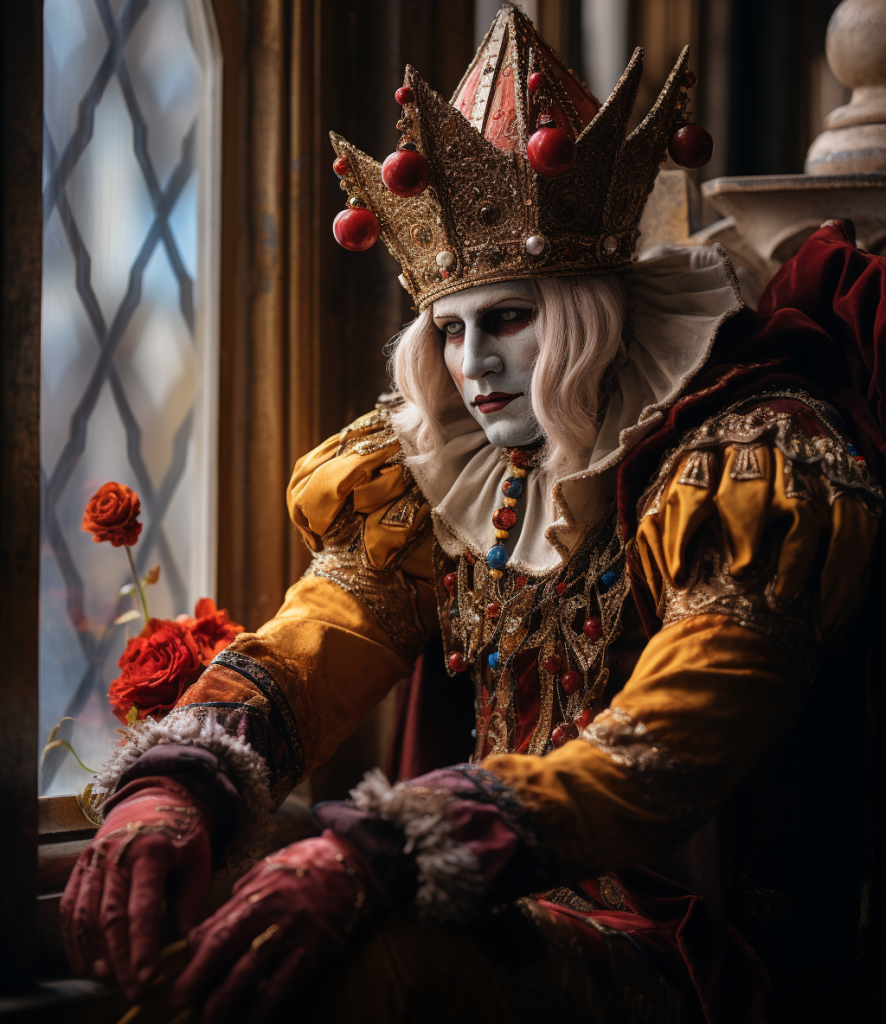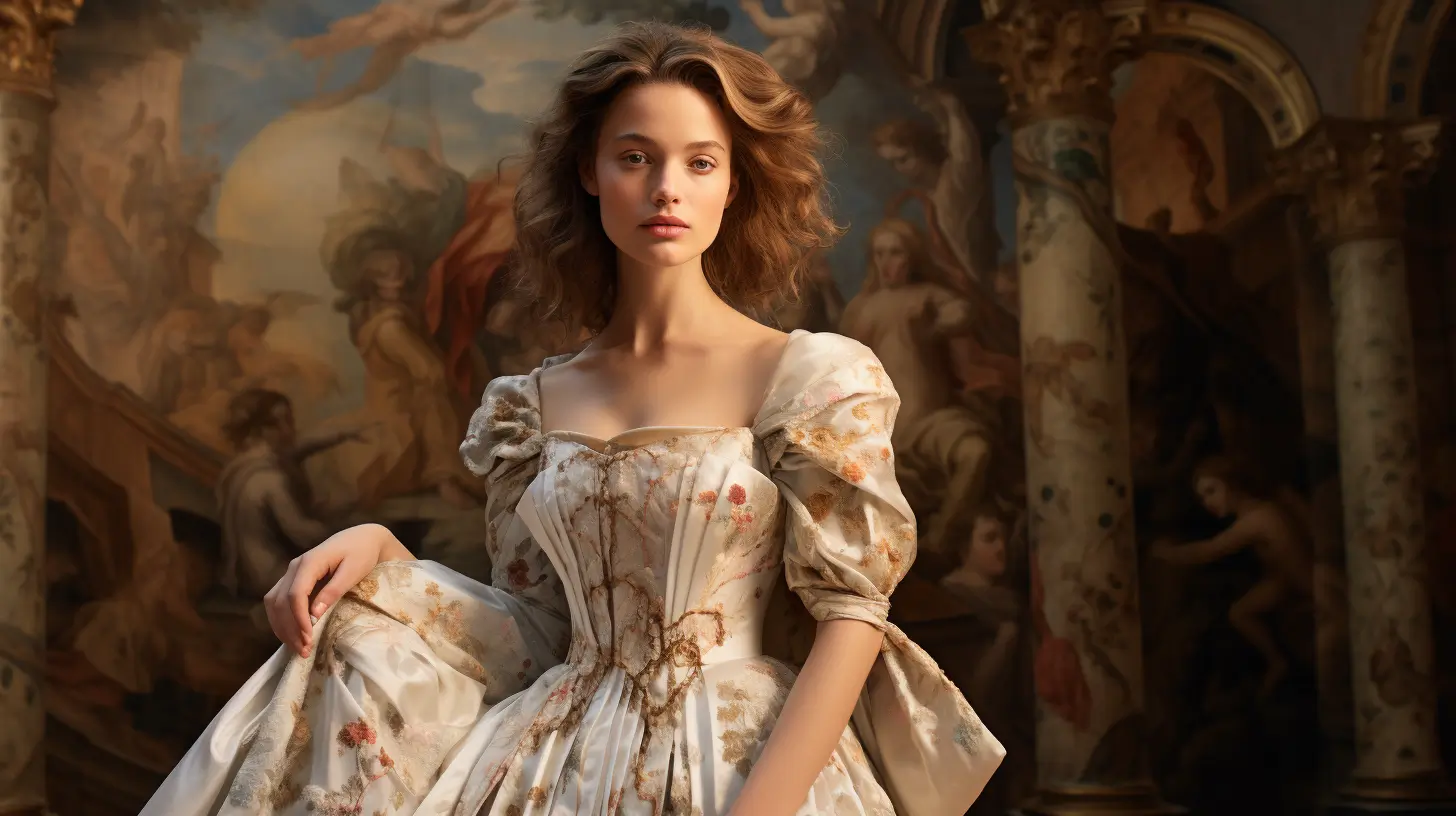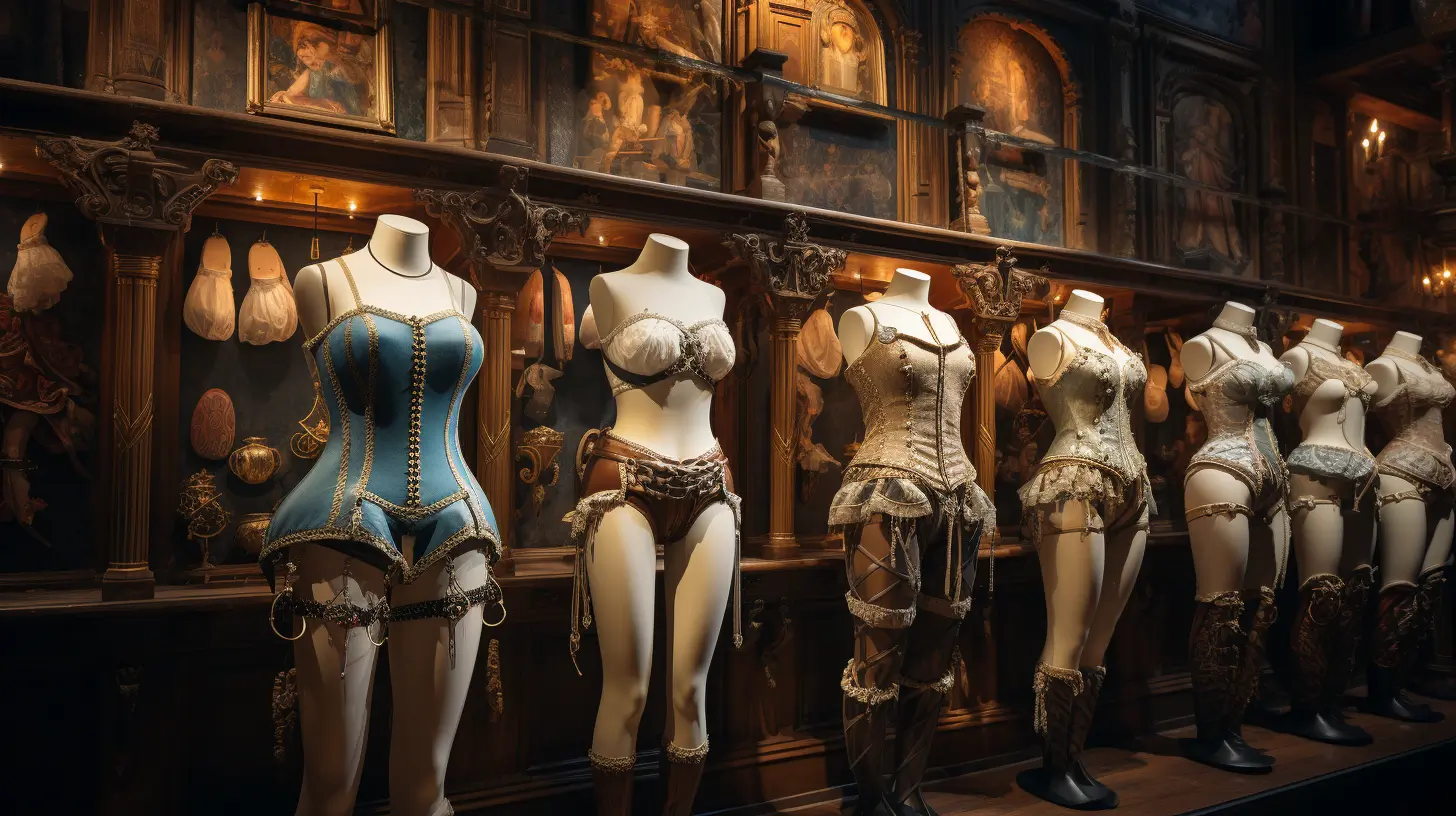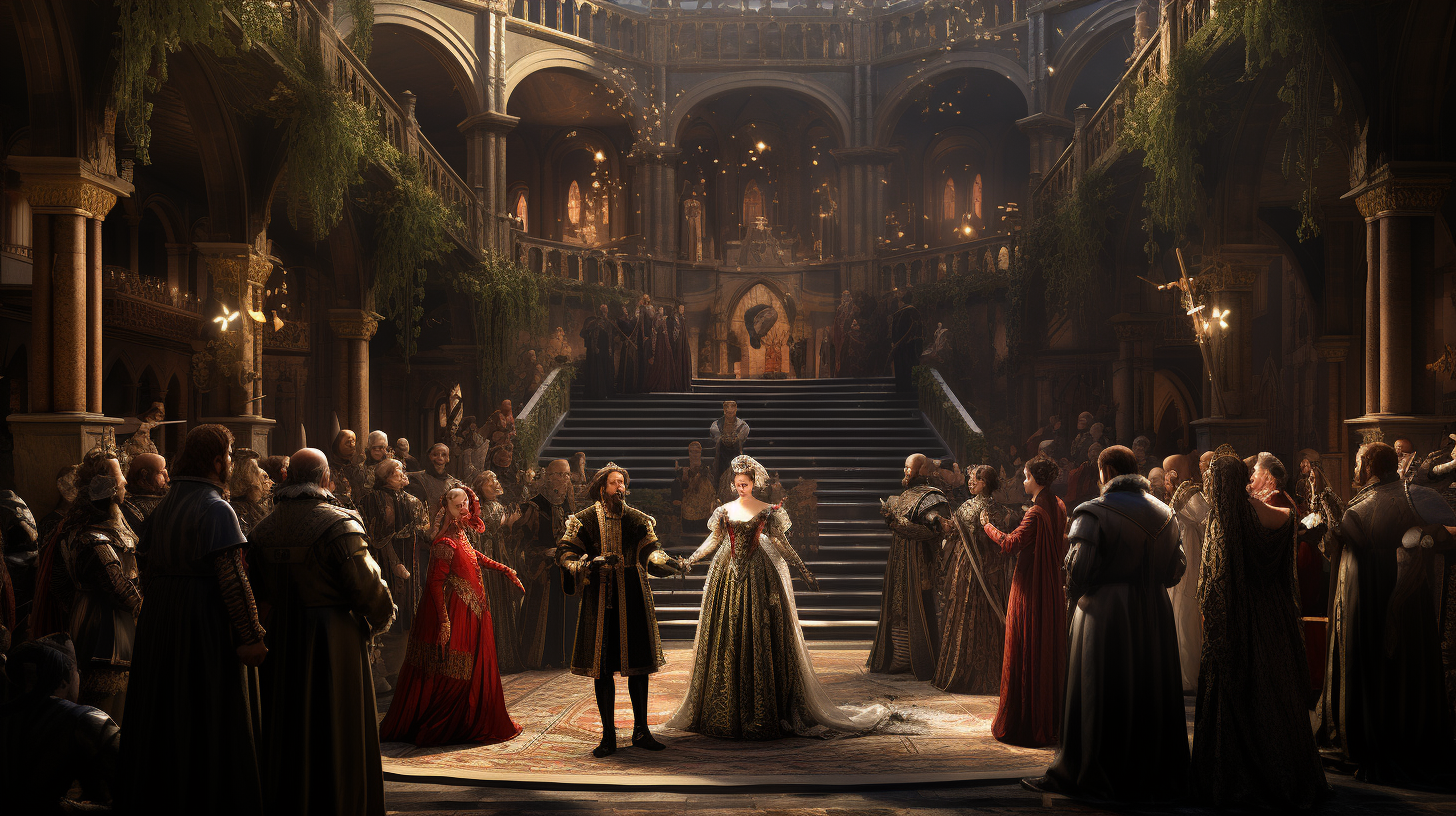
Jesters Unveiled: The Fashion and Flamboyance of Medieval Fools
The Craftsmanship Behind the Costume
The Artisan’s Touch
The creation of a jester’s costume was a nuanced art, a testament to the skill and creativity of medieval artisans. These craftsmen and women were the unsung heroes of their time, weaving not just fabric but stories into each garment. Each jester’s costume was a one-of-a-kind masterpiece, reflecting the individual character and role of its wearer.
Techniques and Textiles
In the world of jesters, the choice of fabric and the technique used to fashion it were as important as the colors chosen. From the weaving and dyeing to the intricate embroidery, each step in creating a jester’s garb was an exercise in meticulous craftsmanship. Silks, velvets, and a variety of other fabrics were sourced, each selected for its texture, color, and the statement it was intended to make.
Evolution of Jester Attire
The jester’s wardrobe evolved over the centuries, mirroring the broader shifts in medieval fashion trends. This evolution was not just a change in style, but also a reflection of the changing social and economic landscapes of the era. It showed how fashion could be both a response to and an influence on the world it adorned.
This deep dive into the craftsmanship behind the jester’s costume reveals the incredible artistry and technical skill that went into creating these iconic outfits. More than mere clothing, these costumes were a blend of function, fashion, and satire, playing a crucial role in the life and work of the medieval jester.
The Anatomy of a Jester’s Wardrobe
The Quintessential Jester
Let’s dissect a jester’s garb, a true carnival of fabrics and hues. The most iconic piece was the jester’s hat, often called a ‘cap ‘n’ bells’. This whimsical headgear, typically adorned with bells and often featuring a floppy, multi-pointed design, was an unmistakable mark of the fool.
Layers of Meaning
Beneath the hat lay a world of sartorial wonder. The jester’s tunic, often a patchwork of different colors, represented the eclectic nature of their profession. Each piece of fabric told a story, whether a remnant of a noble’s cast-off garment or a piece of finely woven silk.
Footsteps of Mirth
And then, the shoes – curled at the tips and sometimes extending absurd lengths. These were not just comedic; they were a testament to the jester’s role as a walker between worlds, a character both grounded and whimsical.
Accessories: More Than Mere Embellishments
Jesters often carried a bauble – a mock scepter topped with a carved head or figure, symbolizing their parody of the royal court. This, along with their belled accessories, created a soundscape that announced their presence long before they were seen.
In these layers and textures, we find not just clothing but a narrative. Every stitch, bell, and hue was a piece of a story about defiance, creativity, and survival in a rigidly structured world. The jester’s wardrobe was their stage, and they wore it with a flair that transcended mere fashion.

The Symbolism Behind the Flamboyance
Colors That Speak
In the realm of jesters, every color had a voice. Bright reds and yellows weren’t just eye-catching; they were statements of visibility in a world where most were overlooked. The jester’s palette was a deliberate choice, a rebellion against the muted tones that dominated the era’s fashion landscape.
Patterns of Dissent
The patchwork nature of a jester’s tunic was more than a stylistic choice. It was a subtle satire of the rigid social hierarchy. By mixing fabrics from various origins – some noble, some common – jesters blurred the lines of class distinction, mocking the very system they operated within.
Bells and Baubles: Sounds of Satire
The jester’s bells did more than jingle. They symbolized the fool’s role as a disruptor of silence, a challenger of norms. Each ring was a reminder that even in the most controlled environments, laughter and satire found a way to resonate.
In understanding the symbolism behind a jester’s flamboyant attire, we uncover layers of meaning that extend far beyond mere fashion. Their clothes were a form of expression, a commentary on the society they lived in, and a reflection of their unique position within it. The jester, in their brightly colored, bell-adorned garb, was not just an entertainer but a living, breathing piece of social commentary.
Jesters in Art and Literature
Mirrors of Medieval Mindsets
The jester’s presence in medieval art and literature offers a window into how they were perceived and idealized. Illuminated manuscripts and paintings often depict jesters in full regalia, highlighting their importance in the cultural tapestry of the time.
The Literary Jester
In literature, jesters were portrayed with a mixture of affection and mockery. They were often the only characters who could navigate between the layers of society, using their wit and attire as tools of both comedy and critique. From Shakespeare’s wise fools to Chaucer’s cunning jesters, these characters provided insight into the complexities of medieval life.
The Modern Interpretation
Fast forward to contemporary times, and the jester’s image endures, albeit often romanticized. Films, novels, and art reinterpret the medieval jester, sometimes straying from historical accuracy but always capturing the spirit of these enigmatic figures. These modern depictions continue to influence our perception of the jester, blending historical fact with creative license.
This exploration into art and literature not only illuminates the jester’s historical role but also underscores their enduring influence. The jester’s fashion, while deeply rooted in medieval culture, transcends time, continuing to inspire and intrigue in a modern context.
The Craftsmanship Behind the Costume
The Artisan’s Touch
The creation of a jester’s costume was a craft in itself. Tailors and artisans, often unsung heroes of medieval fashion, poured skill and creativity into every garment. These costumes were not mass-produced; each was a unique creation, tailored to the jester’s persona and role.
Techniques and Textiles
The techniques used in crafting these costumes were as varied as the fabrics themselves. From weaving and dyeing to embroidery, the process was meticulous and time-consuming. The materials ranged from luxurious silks and velvets to more humble cloths, each chosen to convey a specific message or aesthetic.
Evolution of Jester Attire
Over the centuries, jester fashion evolved, reflecting changes in societal tastes and textile technology. The transition from simple, rough-spun tunics to more elaborate, multi-layered costumes mirrors the broader evolution of medieval fashion. This evolution speaks volumes about the era’s shifting cultural and economic landscapes.
In delving into the craftsmanship behind the jester’s costume, we gain an appreciation for the artistry and technical skill that went into creating these iconic outfits. The jester’s wardrobe was more than just a set of clothes; it was a masterpiece of medieval craftsmanship, representing a fusion of function, fashion, and satire.
The Cultural Impact of Jester Fashion
Fashion as a Legacy
The impact of medieval jester fashion extends far beyond the walls of castles and courtyards. Its influence can be seen in modern fashion, where bold patterns and unconventional designs echo the jesters’ fearless style. The jester’s love for vivid colors and intricate patterns paved the way for more adventurous and expressive fashion trends.
From Courts to Catwalks
Today, elements of jester attire can be spotted in contemporary fashion shows and streetwear alike. Designers often draw inspiration from the jester’s eclectic style, blending historical elements with modern aesthetics. The jester’s influence is a testament to their enduring appeal and the timeless nature of their fashion.
Enduring Cultural Symbol
The jester remains a potent symbol in popular culture, representing humor, irreverence, and the courage to speak truth to power. Their fashion, with its distinctive blend of flamboyance and satire, continues to captivate and inspire, reminding us of the power of clothing to convey identity, challenge norms, and make a statement.
In understanding the cultural impact of jester fashion, we see how these medieval entertainers left an indelible mark on the world of fashion and beyond. Their legacy lives on, not just in history books, but in the very fabric of our contemporary fashion and cultural landscape.
As we draw the curtains on our journey through the flamboyant world of Medieval Jester Fashion, we’re left with a vivid picture of these enigmatic entertainers. Far from being mere sources of amusement, jesters were pivotal figures in the tapestry of medieval society, their fashion a language spoken in colors, patterns, and textures.
We’ve traversed the historical corridors where jesters played their roles, unraveling the symbolism woven into their garish garb. Their attire was a mirror reflecting the complexities of medieval life, a blend of satire, social commentary, and unapologetic flamboyance. In the stitches of their patchwork tunics and the jingles of their belled caps, we heard stories of defiance, creativity, and survival.
Today, the spirit of the medieval jester lingers in the fringes of modern fashion, their legacy a reminder of the power of dress to challenge, to communicate, and to captivate. In a world often constrained by convention, the jester stands as a symbol of the boundless potential of fashion to express the inexpressible, to give voice to the voiceless, and to bring color to the monochrome.
So, as we bid farewell to the world of medieval jesters, let’s carry with us the lessons of their fashion: to be bold, to be different, and above all, to be unafraid to wear our stories for the world to see.









